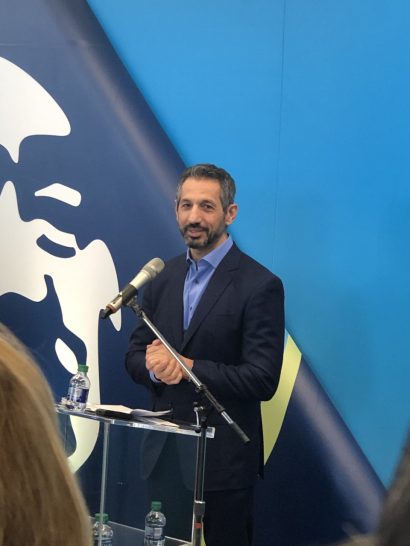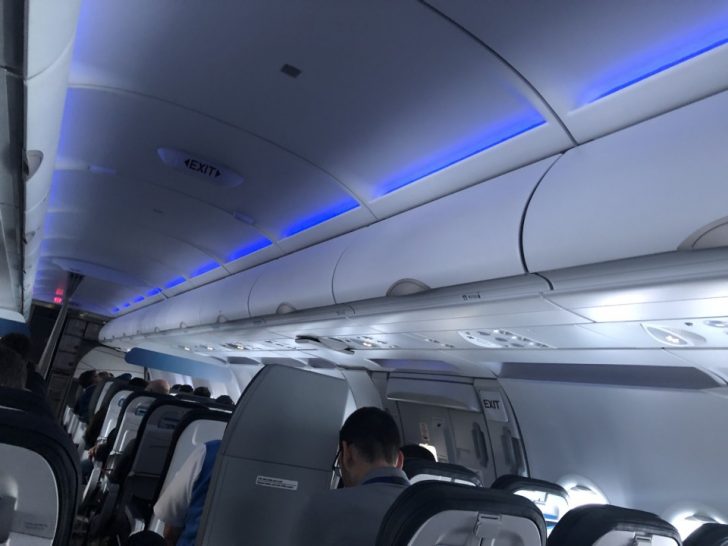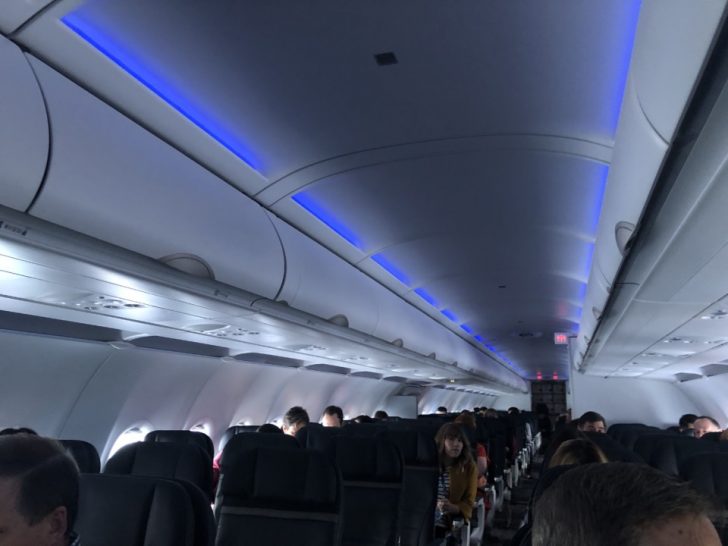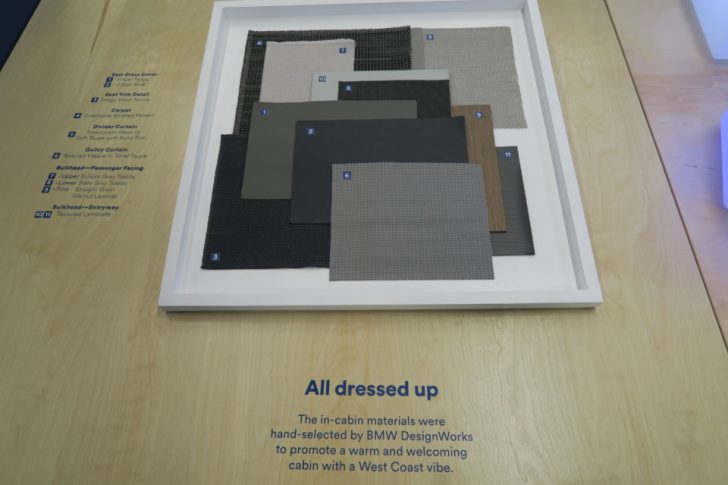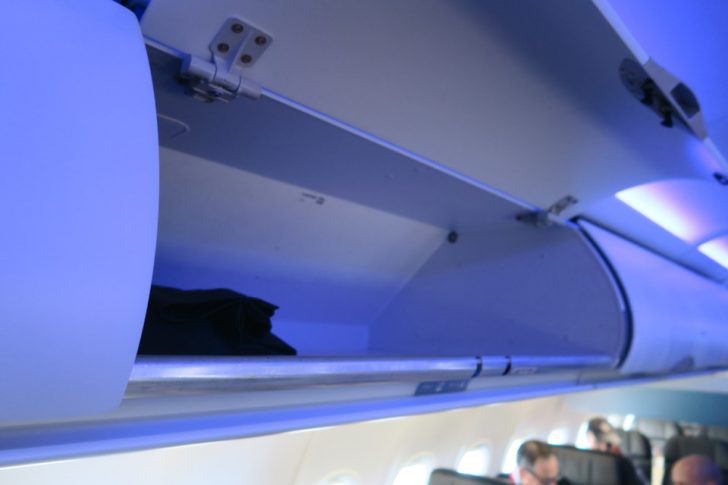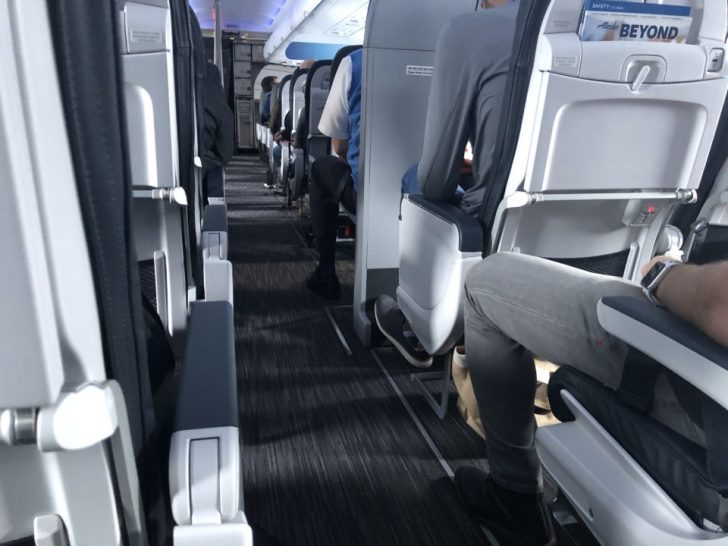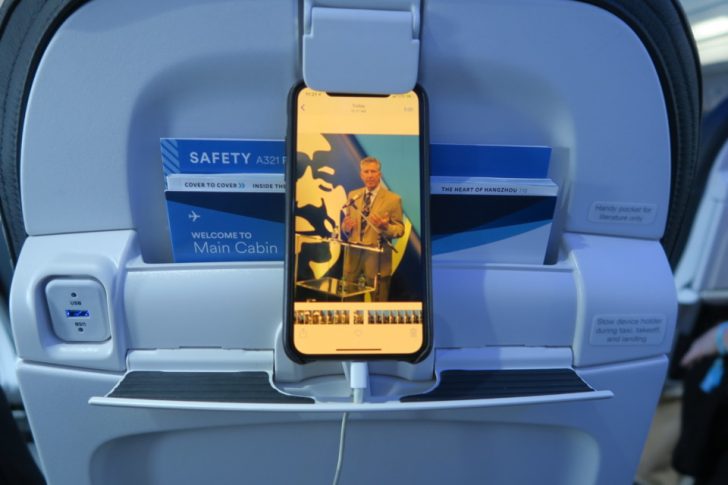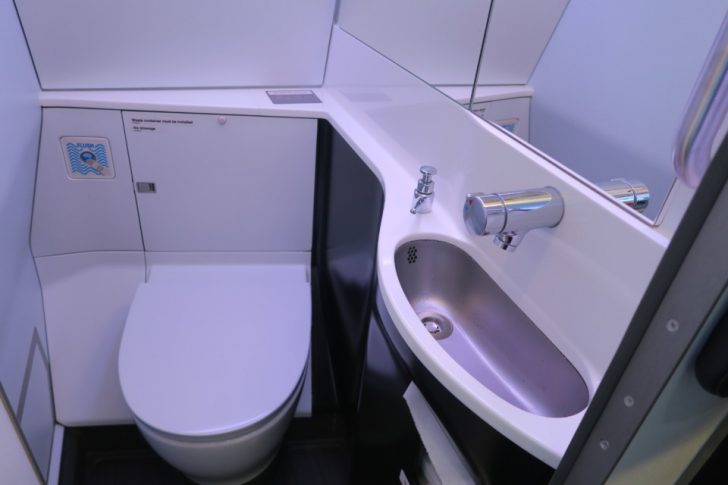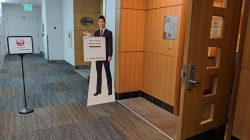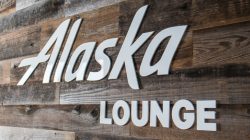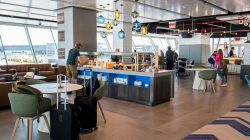Alaska Airlines invited me to San Francisco yesterday for a look at their redesigned in-flight experience, including a charter flight on their first retrofitted Airbus A321 (registration N928VA). For those unaware, Alaska is historically an all-Boeing company but inherited an Airbus fleet with the acquisition of Virgin America. Those planes have fewer (but larger) first-class seats as well as built-in entertainment systems in the main cabin. They’re now retrofitting the Virgin America fleet for brand consistency across all their aircraft.
The experience was held in Terminal 2 at SFO, at gate 54B. There was a buzz of curiosity amongst attendees from the media, travel professionals, and customers, above and beyond the complimentary espresso that was being offered to preview of the barista and coffee service that will be in the new SFO Alaska Lounge. Everyone was anxious to learn the future of Alaska’s integration plans for Virgin and Alaska. I was looking forward to finding out Alaska’s post-merger vision and experiencing the new seats.
Stations were set up around the gate to showcase some of the new products. and there was also a Q&A opportunity with top executives including Ben Minicucci (President and COO), Andrew Harrison (EVP and Chief Commercial Officer), and Sangita Woerner (VP Marketing).
Here’s what was showcased at the event and what you can expect to see in the future, beginning as early as next month.
New and Updated Alaska Lounges
Alaska plans to open a new 8,500 square foot lounge at SFO on the 3rd floor (rooftop) in T2 in 2020, which can’t come soon enough for Alaska flyers passing through SFO. You can no longer use your Alaska Lounge membership at the Admirals Club in T2 (some other Admirals Club locations are eligible), so Alaska has been sending members to the Cathay lounge in the International Terminal. That is very inconvenient.
The new lounge will feature views looking out over the San Francisco Bay and offer Starbucks beverages, made-to-order meals for purchase and a bar program featuring local Bay Area beers and West Coast wines.

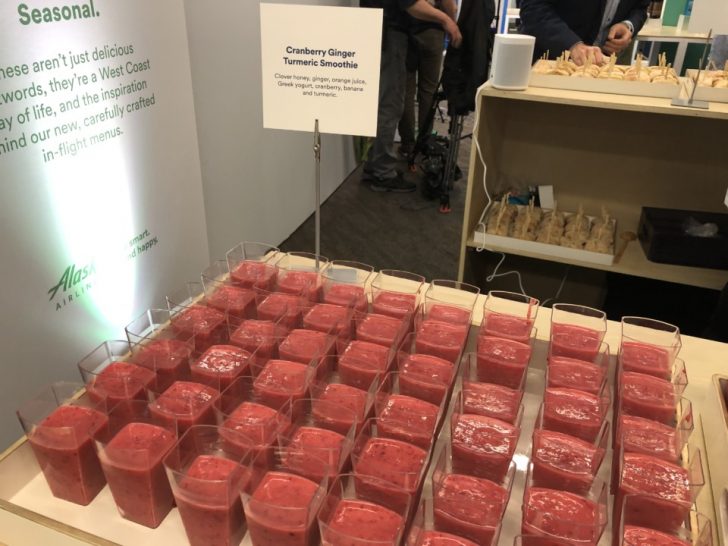
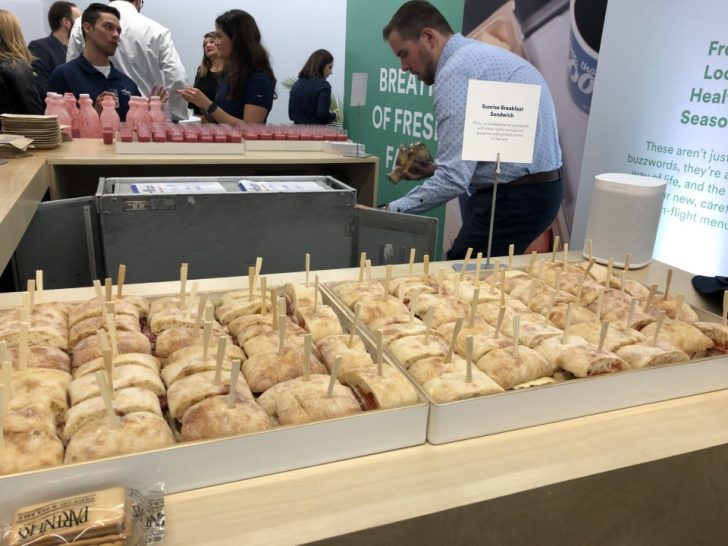
In keeping with the Alaska Lounge expansion plan, a new flagship lounge of 15,800 square feet at Sea-Tac Airport will open in the next few months. This is to be in the newly renovated North Satellite. Renovations with a fresh look will also be rolled out in Alaska lounges in Los Angeles, Anchorage, and Portland in the coming months that will each include a barista station, made-to-order meals, and additional seating.
Retrofitted Airbus Fleet
Most of the Virgin planes have already been repainted to match Alaska’s new livery (with 18 left to go). While the first Airbus A320 out of 70+ had already been retrofitted and is back in service, it was a bit of a mystery until yesterday what changes were in store for the former Virgin America Airbus A321’s. Alaska is on track to have 85% of the Virgin planes retrofitted by the end of 2019.
Lighting
One of the easiest changes to spot onboard is that the deep purple mood lighting has been replaced with blue hues meant to work in conjunction with circadian rhythms. The lighting scheme illuminates and glows softly depending on time of day. The result is lighting that changes throughout flights to promote an uplifting energy during the day and calming energy into the evening.
Cabin Interior
The aircraft interiors were architecturally inspired to give a warm and welcoming yet modern feeling. Tech-savvy materials in a neutral palette showcase craftsmanship as well as linearity.
New Crew Uniforms
The new Alaska uniforms designed by Luly Yang were on display at the event, and Luly Yang was also in attendance. While those wearing the uniforms may have stronger opinions on the uniforms in regards to fit and material, I liked the bold pops of color.
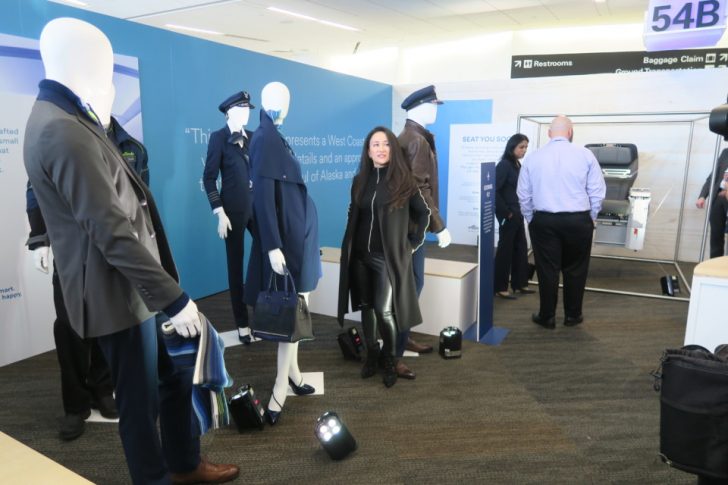
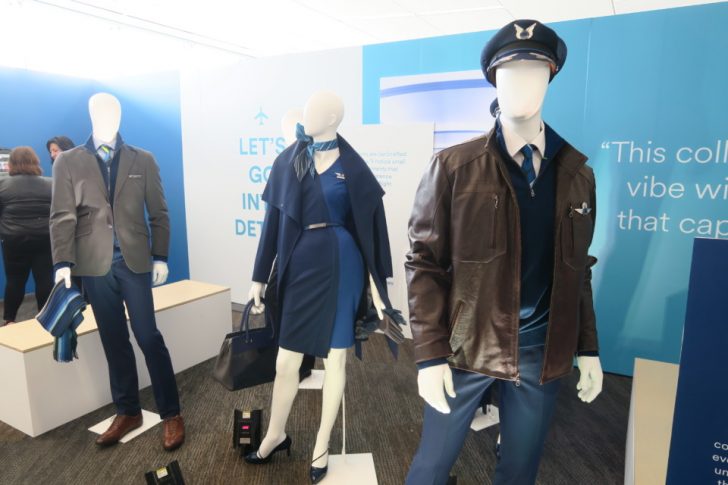
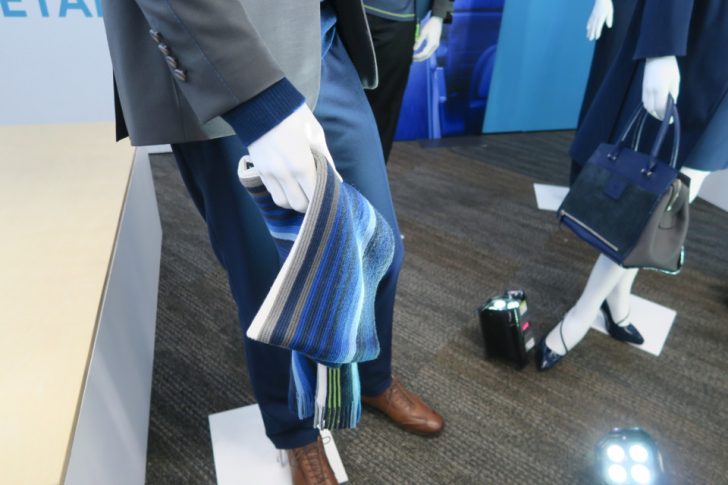
In-Flight Entertainment
The seat-back entertainment displays have been replaced with personal device streaming in all classes. Alaska has never really embraced built-in systems, which add weight, but it was among the first to offer free streaming entertainment through your personal device. (Some other carriers are now following suit.) Alaska boasts that they are the domestic carrier with the most movies (400) and TV shows (200).
Power outlets and USB outlets are still there at every seat. You can easily connect your devices without having to twist like Gumby to plug in underneath your seat. Plus, gone are the bulky electrical boxes that used to take up precious legroom under the middle seats.
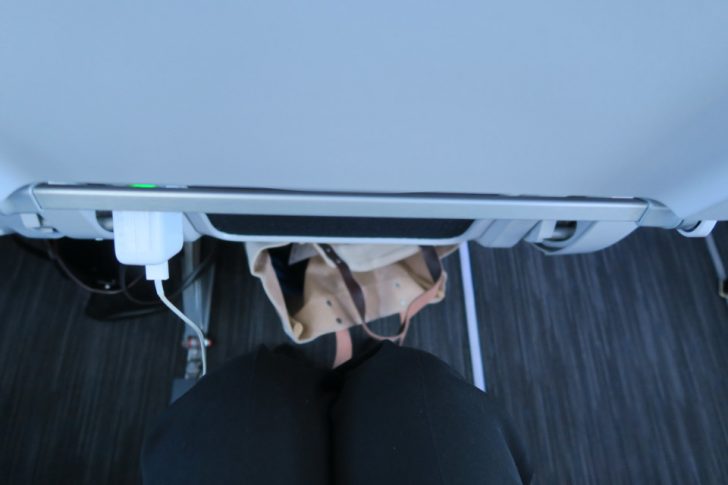
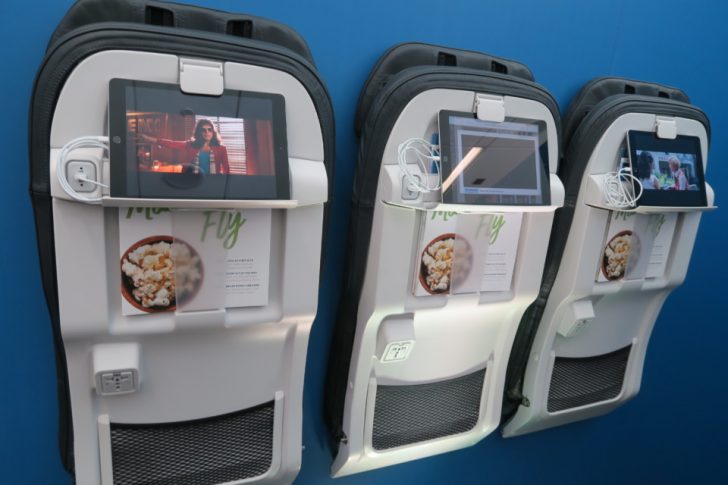
GoGo 2KU is being added, which is a satellite-based Wi-Fi technology touted as having 20 times more bandwidth so you can stream Netflix or similar onboard. Download speeds were over 75 Mbps on this media charter.
Most West Coast Meals
Alaska’s menus continue to focus on fresh, locally-sourced rotation of seasonal ingredients. Virgin’s Airbus fleet was never equipped with ovens in the Economy galley, but Alaska’s current and upcoming food and beverage options in all classes could be summed up in three words: West Coast inspired.
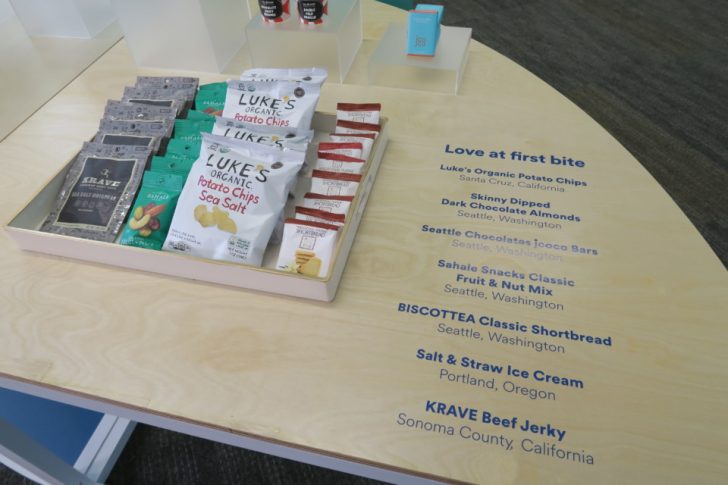
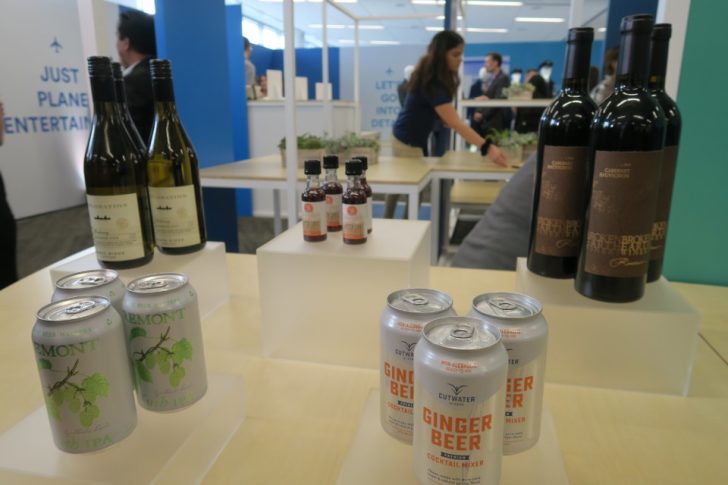
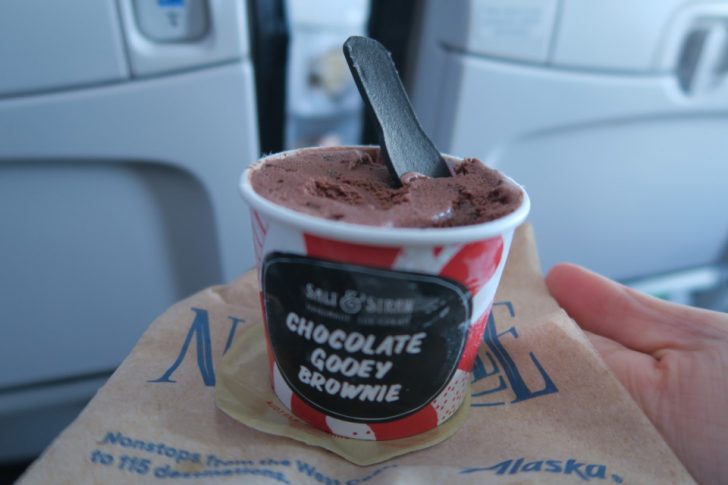
Aside from healthy and/or ever-popular options like the cheese plate, this includes West Coast brands such as decadent Salt & Straw ice cream. Right now the frozen treat is only available in first class, but the powers that be are strategizing so stay tuned for possible economy class updates in the future. Coming soon will also be menu symbols that will make it easy to tell which items are vegan/dairy-free/vegetarian/gluten-free/etc.
New First Class and Main Cabin Seats
There are now 12 seats in First Class, up from Virgin’s 8 (and 24 in Premium). The white leather seats with 55” pitch have been replaced with a neutral-colored 40” pitch Recaro slimline CL4710 seat, new to Alaska. The lumbar support and massage functions are gone as well as the fully adjustable leg rests, but there are foot rests.
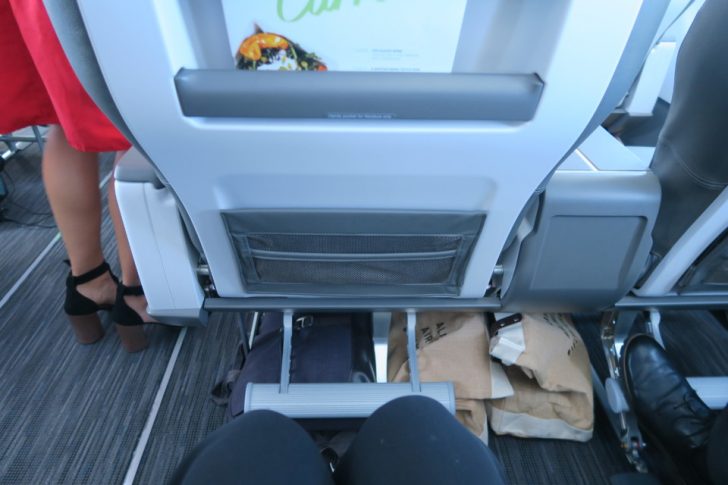
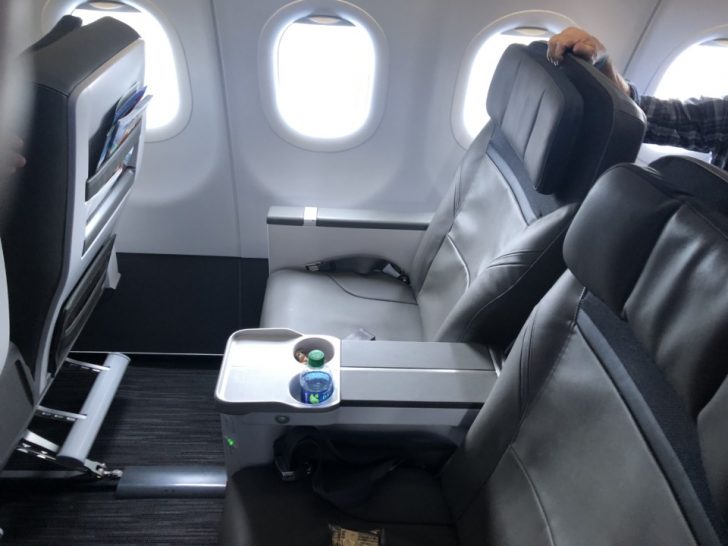
Some will grumble that the 55” pitch on Virgin America was industry-leading, but the higher seat count will enable Alaska to comfortably provide a 75% upgrade success rate to MVP Gold and 75K elite members, according to management. Besides complimentary elite upgrades, MVP Gold members also receive four Gold Guest Upgrades they can use to upgrade themselves or a friend on a one-way flight (even to Hawaii). If you prefer, you can also travel on a private flight charter.
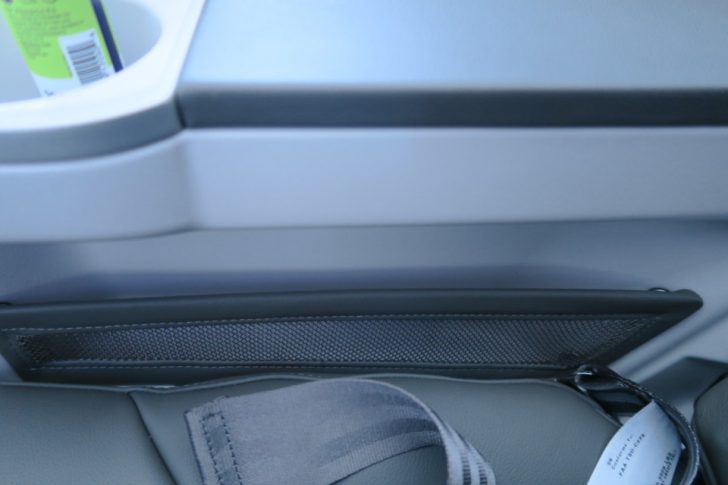
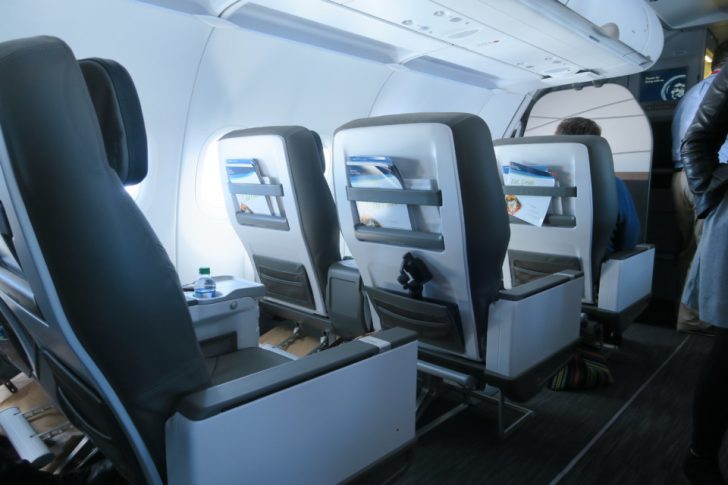
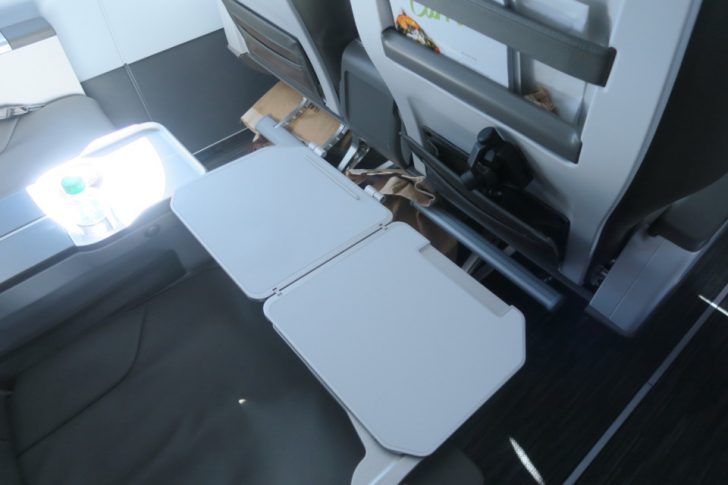
Seats in all classes on the aircraft are made with leather and have 6-way adjustable headrests. Although the seats are slimline, which means there is less overall padding, they have memory foam to provide additional comfort and support. The seatback pocket is also comprised of a very stretchy material. I found the seat to be quite comfortable in both First and Economy, and I was pleased with the thoughtful touches.
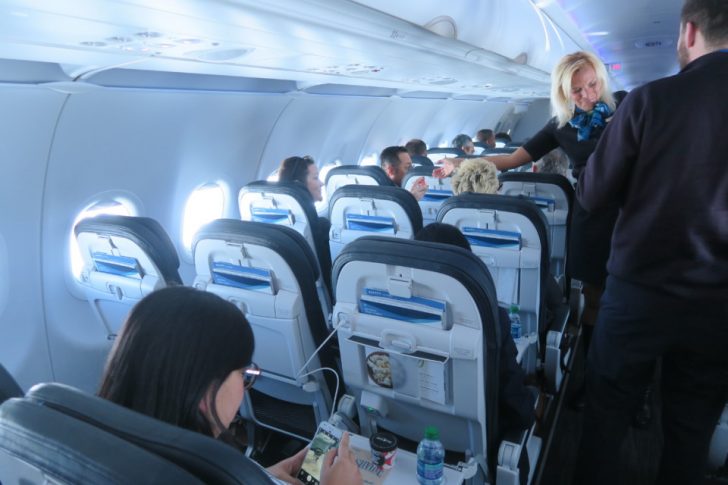
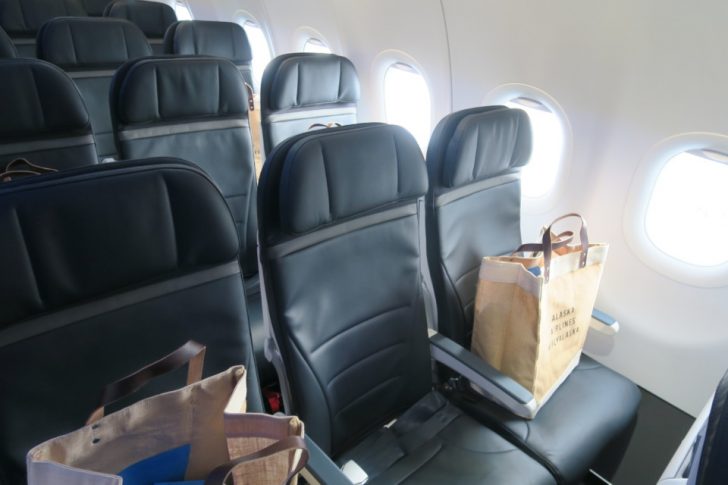
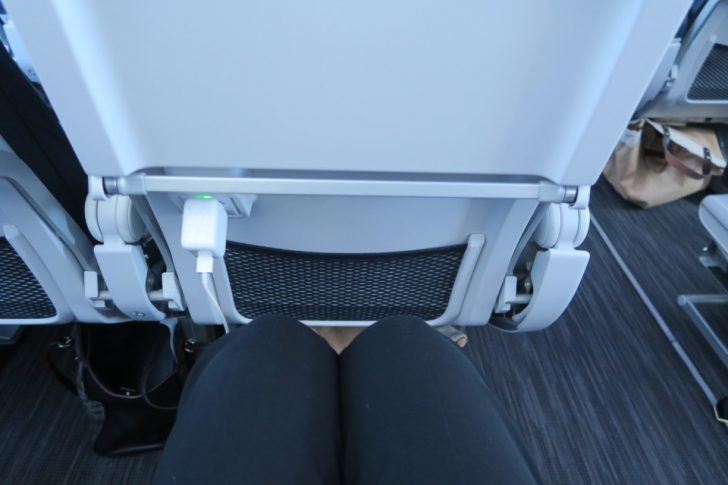
Cup holders are now present in First and Premium seats, so you can have full use of your tray table even when you have a drink. I got a kick out of the fact that there is a subtle line down the middle of the cupholder/table that separates the space belonging to each passenger. It reminded me of when kids draw lines down the middle of the back seat in a car to show which area is theirs or a sibling’s. The need for clearly delineated personal space apparently never goes away.
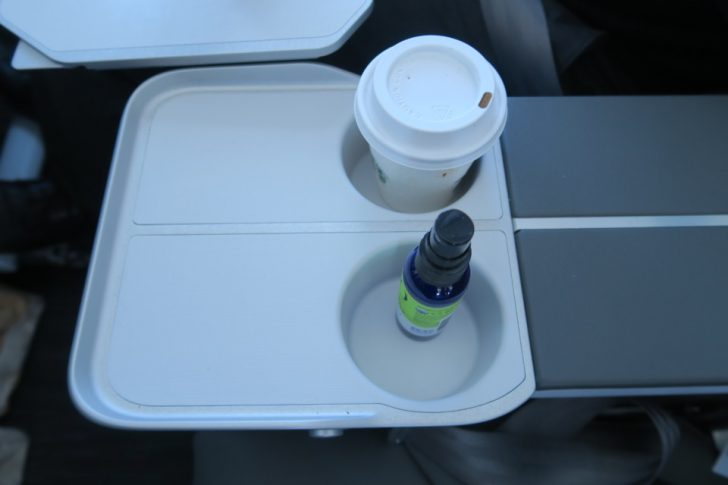
Tray tables fold up in first class and have support so they don’t flop around or tilt down at an angle. There’s even a built-in stand you could use for reading or as a tablet holder. Even the main cabin gets tablet holders on the seat back with an adjustable ledge that folds in and can accommodate anything from large tablets to small phones.
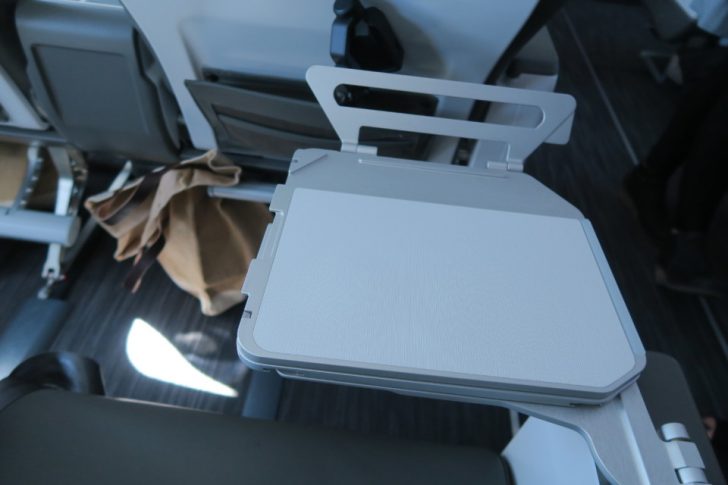
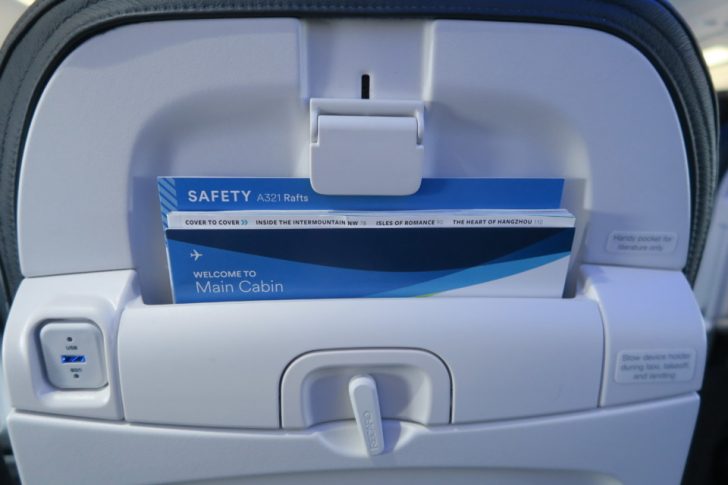
Unfortunately, the lavatories are still tiny, part of a common trend on new aircraft today.
Final Thoughts
One thing that repeatedly shined through during the Q&A, product demos, and flight is that Alaska is working hard to be very customer-centric. They want to get the integration right, and they want their customers to be happy. In the press release about the new cabin experience, they pointed out that the upgraded cabin is the result of two years of customer research (ever since the merger).
Many Virgin America flyers loved the large first class cabin, and while it would have been exciting if Alaska had rolled out a lie-flat seat for transcons, maximizing premium revenue on these routes is not their strategy. During the speeches yesterday, management was quick to point out that their focus over the next 3-5 years is doing the Virgin/Alaska integration right and making the West Coast hubs work. When looking at other past mergers between other airlines (here’s looking at you, Continental/United, or American/US Airways) things have definitely been less than smooth, with persistent IT problems or fleet interior retrofitting still sadly outstanding.
It was very interesting to see the redesigned Alaska inflight experience, and try out the retrofitted A321. The post-merger Alaska Airlines seats are comfortable, with many thoughtful touches in the cabin (adjustable headrest, cup holder, modern yet welcoming decor, tablet holder, and USB/outlet charging options). Listening to feedback from customers is important to Alaska Airlines, and I think they are headed down the right path.

